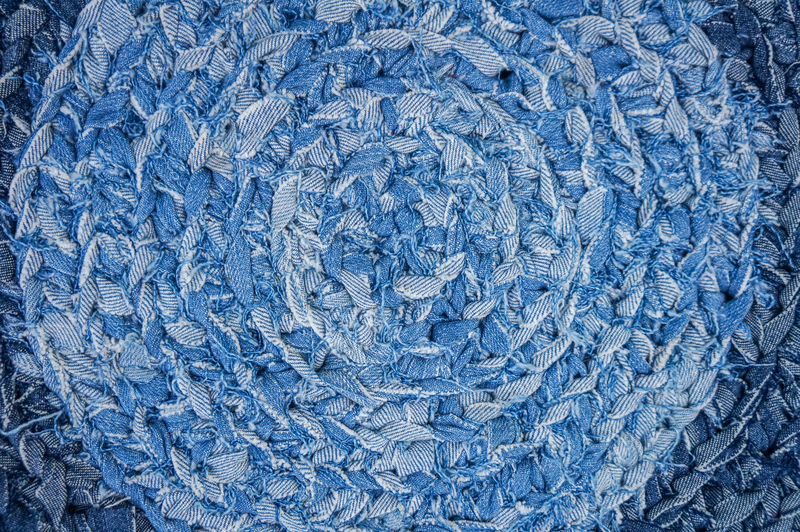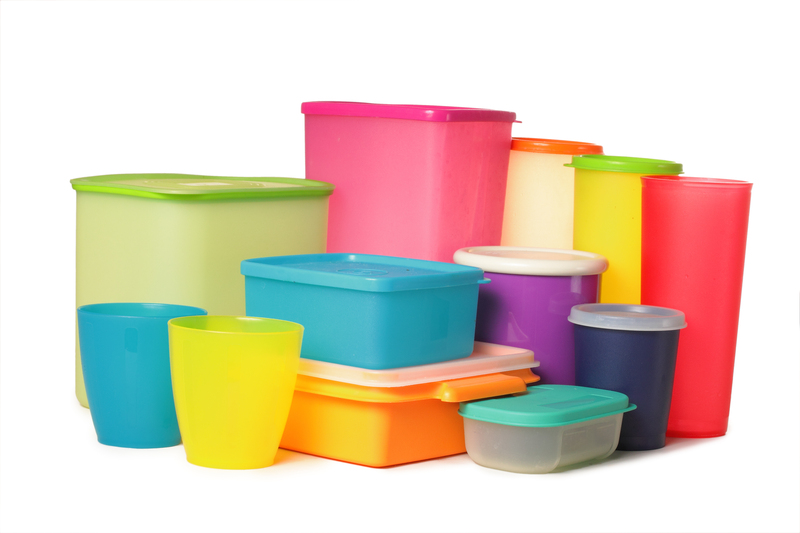Surprising Second Lives: Upcycling Plastic, Glass, and Tin
In an era dominated by environmental concerns and the urgent need for sustainable living, upcycling plastic, glass, and tin offers creative, unexpected solutions to the world's growing waste problems. Rather than relegating used materials to landfills or recycling bins, upcycling breathes new life into discarded items, transforming them into functional or decorative treasures. In this comprehensive guide, we delve into the fascinating journeys and remarkable transformations of these ubiquitous materials--revealing just how astonishing their second lives can be.

The Art and Science of Upcycling: A Sustainable Revolution
Many people confuse recycling with upcycling, but there are key differences. Recycling typically breaks materials down into their base elements, which are then manufactured into new products--often lower in quality than their original form. Upcycling, on the other hand, involves repurposing and creatively reimagining materials, giving them enhanced value or function without extensive processing.
- Upcycling reduces energy consumption compared to recycling.
- Less waste is generated, since items are reused rather than discarded or remanufactured.
- Upcycling often results in unique and personalized creations.
- Encourages creativity and innovation in both individuals and industries.
Plastic: Beyond Bottles and Bags
Understanding the Plastic Problem
Each year, the world produces more than 300 million tons of plastic, much of which ends up polluting oceans, landscapes, and ecosystems. Single-use plastics, especially bottles and bags, are particularly notorious for their environmental toll. However, innovative minds across the globe are turning the tide by upcycling these items into products with surprising uses and longer lifespans.
Innovative Upcycling of Plastic
-
Eco-Friendly Building Materials
Plastic bottles are being pressed and fused into durable building blocks and bricks for constructing homes, schools, and even roads in resource-poor regions. -
Fashion and Design
Used plastics are transformed into stunning clothing, bags, and accessories. Global brands upcycle ocean plastic into premium sneakers, jackets, and art pieces. -
Everyday Objects
Clever upcyclers repurpose bottles into planters, bird feeders, or watering cans. Plastic caps become mosaics or colorful furniture ornaments. -
3D Printing Filaments
Discarded plastic containers are shredded and re-melted to produce filaments for 3D printing, providing makers and tinkerers with a sustainable resource for prototyping.
The beauty of upcycling plastics lies in its accessibility--anyone can participate! From DIYers crafting garden decor to eco-conscious entrepreneurs developing modular furniture, the range of applications is immense.
Case Study: Turning PET Bottles into Homes
In several countries, creative organizations use filled PET bottles as affordable insulation within walls. When combined with mud or cement, these bottles provide excellent thermal properties, reduce construction costs, and divert mountains of plastic from landfills.
The Second Shine of Glass: From Trash to Treasure
The Glass Upcycling Advantage
Glass boasts a unique upcycling appeal due to its durability, impermeability, and easy cleaning. Unlike plastic, it doesn't degrade over time, making it an ideal candidate for inventive second-life uses.
-
Artistry and Decor
Old bottles and jars are sliced, shaped, and fused into vibrant mosaics, candleholders, vases, and stained-glass windows. Creative studios offer workshops on crafting stunning objets d'art from discarded glass. -
Eco-Construction Materials
Ground glass is increasingly used as an aggregate in concrete, giving rise to stronger, lighter, and more colorful construction materials. This not only saves natural resources but also reduces the carbon footprint of construction projects. -
Tableware Transformation
Broken or unwanted glassware can be melted and molded into exquisite bowls, serving plates, or unique drinking glasses. -
Landscaping Marvels
Upcycled glass, tumbled smooth, serves as a sparkling mulch for gardens or as a drainage layer in planters and rain gardens.
Case Study: Glass Bottle Walls and Greenhouses
Visionary builders have long used empty bottles as bricks, constructing glass bottle walls that create mesmerizing patterns of light. In some eco-communities, entire greenhouses are fashioned from colored glass bottles, combining recycling with sensible design for improved plant growth and unique aesthetics.
Simple Glass Upcycling Ideas You Can Try
- Convert a glass jar into a herb planter or kitchen storage container.
- Create a decorative lamp by inserting fairy lights into a wine bottle.
- Make rustic candle holders from cleaned jelly jars for cozy ambiance.
With some basic tools and a spark of imagination, anyone can create lasting beauty from glass that might otherwise be forgotten.
Tin's Remarkable Revival: More Than a Can-Do Metal
Overview: Tin and Metal Upcycling in Action
Many households accumulate stacks of tin cans from food, paint, or other products. Most are tossed or, at best, sent for recycling. But tin and other metals are infinitely recyclable and perfectly suited for upcycling, offering endless creative opportunities and tangible environmental benefits.
Surprising Second Uses for Tin Cans
-
Functional Organizers
Decorated tin cans become stylish pencil holders, kitchen utensil caddies, tool organizers, or bathroom storage solutions. -
Garden Innovations
Perforated cans make excellent seed starters, mini planters, or even self-watering pots for herbs and succulents. -
Decor and Lighting
Simple techniques turn empty cans into beautiful lanterns, wind chimes, or candle holders, adding an industrial-chic flair to any space. -
DIY Toys and Gadgets
By combining multiple cans with string or rods, inventive crafters create classic toy telephones, musical instruments, or even simple robots.
Case Study: Tin Can Art Exhibits
Art galleries and community centers worldwide have hosted exhibitions dedicated to upcycled tin art, ranging from intricate sculptures to working clocks. These events showcase how everyday materials, when handled with care and creativity, can transcend their humble origins and inspire awe.
Environmental and Economic Benefits of Upcycling
The upcycling movement addresses global waste and resource scarcity challenges while supporting local craftspeople and businesses. Here's how:
- Reduces landfill waste and lessens the environmental burden on communities.
- Conserves natural resources by extending the lifespan of existing materials.
- Saves energy compared to manufacturing new products from virgin raw materials.
- Creates jobs and supports small businesses dedicated to innovative upcycling projects.
- Encourages creativity, both as a personal hobby and in the wider marketplace.
The Future of Upcycling: Innovation and Inspiration
As the world embraces a circular economy, the second life of plastic, glass, and tin will become an essential element in sustainable design and manufacturing. Many startups, established brands, and grassroots movements are rewriting the narrative for discarded materials, viewing them as valuable resources with untapped potential.
Emerging Trends in Upcycling
- Mixed Material Creations: Upcyclers are blending plastic, glass, and tin to produce hybrid products--think pendant lamps made from soda cans and colored bottles, or outdoor benches constructed with bottle-plastic bricks and glass mosaic surfaces.
- Tech-Driven Upcycling: Advances in digital fabrication and mobile apps make it easier than ever to transform waste into wonders, such as 3D-printed home goods from upcycled plastic or crowd-sourced design competitions featuring smart upcycled inventions.
- Community and Educational Projects: Schools and neighborhoods organize upcycling drives and workshops, turning waste management into engaging, hands-on learning experiences.
- Designer Collaborations: High-profile artists and designers snap up discarded materials to craft limited-edition furnishings and artwork, raising awareness of sustainability issues through luxury upcycled goods.

How to Get Started with Upcycling at Home
Ready to give your own plastic, glass, and tin a surprising second life? Here are some tips and project ideas to unleash your inner upcycler:
Top Tips for Successful Upcycling
- Clean materials thoroughly before starting any project to ensure better adhesion, hygiene, and aesthetics.
- Invest in basic tools like strong adhesives, pliers, sandpaper, and cutting implements to handle various materials safely.
- Let your creativity flow: Browse online communities and social media for unique ideas or start designing your own functional art.
- Collaborate and share: Exchange ideas with friends, join local upcycling groups, or participate in community workshops.
DIY Upcycling Project Ideas
- Plastic Bottles: Create self-watering planters, storage solutions, or even jewelry--just by cutting, painting, and joining used bottles.
- Glass Containers: Turn jam jars into spice racks, candle holders, or chic desk organizers.
- Tin Cans: Craft garden lanterns by punching decorative holes and adding candles, or make shelving units by attaching cans to a wooden base.
Conclusion: Embrace the Magic of Upcycling
The surprising second lives of plastic, glass, and tin reveal the immense possibilities hidden within our everyday waste. By embracing upcycling--not just as a trend, but as a lifestyle--we can reduce our environmental impact, support local innovation, and add beauty, value, and history to the objects around us. The journey from trash to treasure is limited only by your imagination, and every upcycled creation is a testament to the power of resourcefulness and eco-friendly living.
Start today: pick up a bottle, a can, or a jar, and imagine what it might become in its astonishing second life.
Remember: every small effort to upcycle plastic, glass, or tin contributes to a cleaner, greener, and more creative world.
